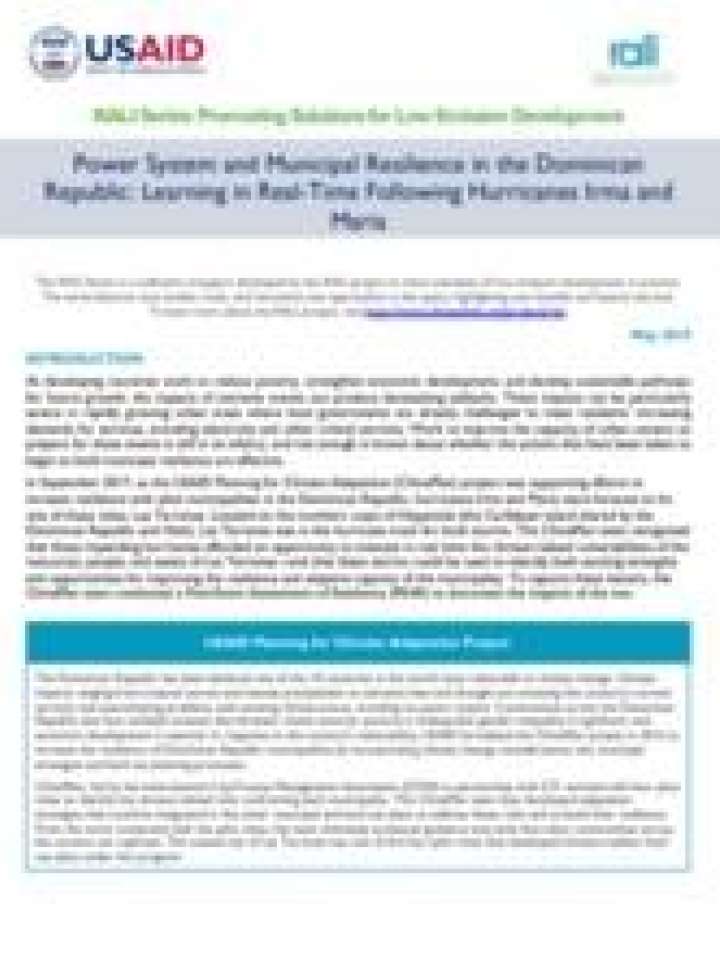Power system and municipal resilience in the Dominican Republic: Learning in real-time following hurricanes Irma and Maria
As developing countries work to reduce poverty, strengthen economic development, and develop sustainable pathways for future growth, the impacts of extreme events can produce devastating setbacks. Work to improve the capacity of urban centers to prepare for these events is still in its infancy, but officials have developed a framework known as Post-Event Assessment of Resilience (PEAR) to further these efforts. This paper describes how PEAR was applied in the municipality of Las Terrenas, Dominican Republic, in September 2017 as hurricanes Irma and Maria were forecast to make landfall.
The paper highlights the findings of the PEAR assessment, with an emphasis on the vulnerabilities of the municipality’s power distribution system as part of a broader examination that surveyed the resilience of a range of the municipality’s infrastructure and services. The paper describes the:
- impacts of the storms on power services to the affected community
- measures taken by the power utility, the municipality, and other entities to prepare for, respond to, and recover from service disruptions
- lessons learned about strategies to increase the resilience of energy services to climate events
The paper concludes that strategies are needed both to make future storms and floods less damaging when they do occur, and to improve the ability of Las Terrenas to rebound when storms do happen. The draft Municipal Land Use Plan provides an opportunity to enhance resilience of the municipality and its assets. This will also benefit the power sector, but additional measures to ensure power system resilience will be required to better manage future storm and flood risk.
Explore further
